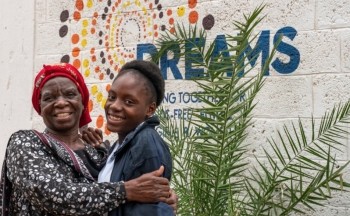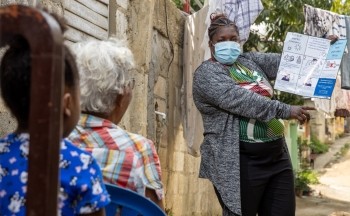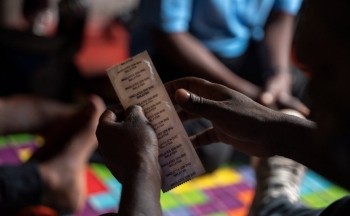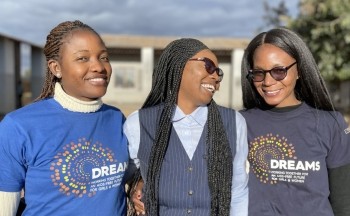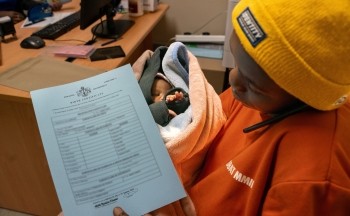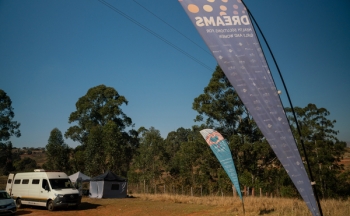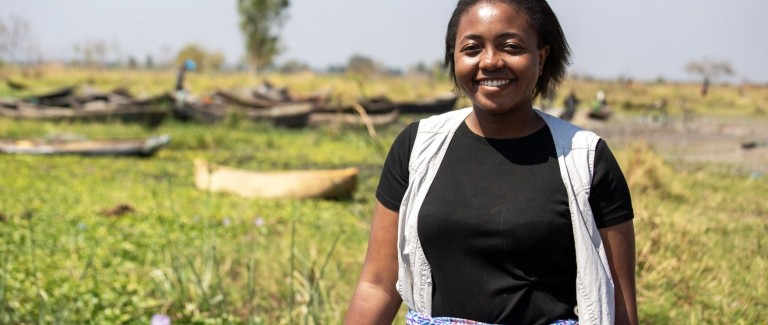
OVC + AGYW
Pact works to improve the lives of orphans and vulnerable children and adolescent girls and young women through comprehensive health and social services.
Orphans and vulnerable children (OVC) face significant risks as a result of HIV/AIDS and its socio-economic effects. Around the world, an estimated 14 million children have lost one or both parents due to AIDS, and 1.8 million children under 14 are living with HIV, with only 53% on treatment.
Despite substantial declines in new HIV infections globally, the HIV/AIDS epidemic also continues to disproportionately impact adolescent girls and young women (AGYW). In Sub-Saharan Africa, 67% of annual new HIV infections in young people occur in AGYW. Data show that AGYW are up to 14 times more likely to become HIV-infected than their male counterparts.
In partnership with USAID, PEPFAR and local organizations, Pact serves OVC and AGYW across Africa and beyond, working to reduce their HIV risks and associated socio-economic vulnerabilities through comprehensive health and social services, including DREAMS programming. Over the past decade, Pact has assisted local partners to achieve outcomes including economic strengthening and improved access to education, health and psychosocial services for OVC and their families. Pact’s programs contribute to PEPFAR’s goal to achieve an AIDS-free generation, as well as to Sustainable Development Goal 3 – Good Health and Well-Being.
Pact works with local partners to tailor case management and referrals for services for OVC and their families, and facilitate safe spaces for AGYW to address the challenges they face in preventing HIV. To effectively serve these populations, Pact partners with community-based local partners to improve their role in designing and delivering integrated solutions to root causes and challenges to HIV prevention and care. Pact works with local partners to train and deploy community change agents to identify OVC households in need and improve HIV case finding, early enrollment into antiretroviral treatment and adherence for viral load suppression.
Pact has delivered HIV services across the world, improving health and social services for more than 2 million people in 2020 and strengthening hundreds of health systems for sustainable impact.
Our Expertise
Global HIV service provision at the community level – Pact leads USAID/PEPFAR’s flagship project to attain and maintain epidemic control among at-risk pregnant and breastfeeding women, infants, children and youth. Delivering services to both AGYW through DREAMS and to OVC, ACHIEVE (Adolescents and Children HIV Incidence Reduction, Empowerment and Virus Elimination) currently works to fill gaps in HIV prevention and treatment, and to strengthen and use data systems.
Accelerating progress toward country-level 90-90-90 goals – In Eswatini, the Pact-led Umliba Loya Embili project (2015-2018) strengthened the capacity of local partners to scale up OVC services for vulnerable adolescents and HIV prevention services for AGYW. Through a social asset approach using AG clubs and YW small group sessions, the project reached 50,000 AGYW. Project partners also reached adolescent boys with HIV and gender-based violence prevention and education, links to HIV testing and referrals for voluntary medical circumcision. Under the follow-on Insika ya Kusasa project, partners have emphasized OVC household socio-economic resilience, AGYW mentoring and youth-friendly mobile HIV testing and family planning services. Pact has also developed a mobile platform for community-based case workers to digitally collect and use OVC referral information.
Helping local governments support OVC – In South Africa, Pact’s Government Capacity Building Support project works with the Department of Social Development to reduce HIV incidence among OVC, adolescents and youth (OVCAY), including those affected by abuse, neglect or exploitation and those in need of services to treat HIV and tuberculosis. Pact has supported social service practitioners to reach 260,000 OVCAY across seven provinces.
Developing OVC household resiliency – Pact’s OVC projects aim to improve resilience through capacity development at the local partner level, as well as among the individuals and communities they serve. In Tanzania, Pact works across 81 councils under the USAID Kizazi Kipya project, strengthening the resiliency of families caring for OVC through case management and economic strengthening activities. The project has improved service provision for 800,000 OVC, youth and their caregivers.
DREAMS projects to address and counter AGYW vulnerability – Under Kizazi Kipya, Pact leads DREAMS initiatives to increase access to education, promote positive parenting and facilitate access to HIV testing and counseling services. Implementation of the “Furaha” parenting curriculum has resulted in a 58% increase in caregiver communication with adolescents about safe sex practices and contraceptive methods. The project has also supported 665 schools to improve girls’ education. Between 2015 and 2021, Pact coordinated PEPFAR’s DREAMS initiative in Zambia under the Community HIV Prevention Program (Z-CHPP). Focusing on changing high-risk behavior and increasing AGYW use of HIV services, Z-CHPP conducted outreach using interpersonal communications, radio and television. The program established 40 DREAMS Centers as part of 1,900 safe spaces for HIV and GBV prevention and family planning services. As a result, 1,000 groups of AGYW met weekly, providing a venue for supporting school enrollment and HIV testing and treatment.
Encouraging education retention among DREAMS OVC girls – Pact programs counter the risk of school dropout through education subsidies, addressing norms that discourage girls’ education, and by creating and distributing menstrual hygiene management kits.
OVC + AGYW PROJECTS
-
-
ACHIEVE
Funder: USAID/PEPFAR -
OVC + AGYW Resources
-
ACHIEVE Zambia Outcome Harvesting Results - FY 2023
-
ACHIEVE in Tanzania
-
Climate resilience for orphans and vulnerable children in Zimbabwe
-
Shaping futures: The social service sector's transformative role in supporting children & adolescents living with HIV
-
ACHIEVE Tanzania Highlights - Semi-Annual Newsletter (April - September 2022)
Stay Updated. Subscribe Now.
Pact's e-newsletter offers the latest on our efforts around the world to build thriving, resilient and engaged communities that are leading their own development.
